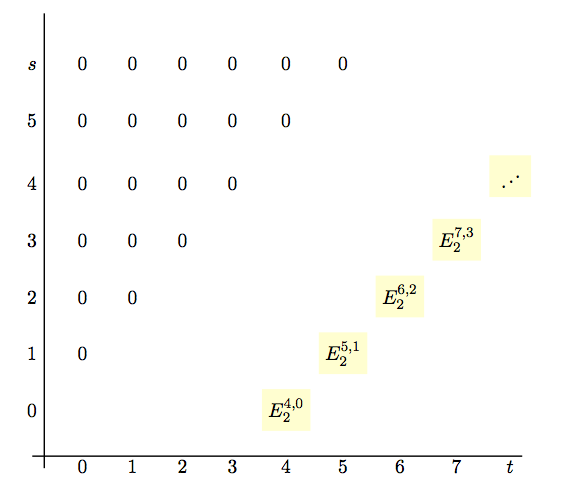As the title suggests, I'm trying to apply the Adams Spectral sequence to get some insights of the bordism group $$ \Omega_4(\xi)= \pi_4(M\xi)$$ where $\xi \colon BSpin \times K(D_{2n},1) \to BSO$ is a stable vector bundle. I'm trying to use ASS because after an application of the James Spectral Sequence (kind of twisted AHSS) I was able to conclude that $$ \Omega_4(\xi)= \mathbb{Z} \ \text{ or } \mathbb{Z}\oplus \mathbb{Z}_2$$ Here you can find a little bit of context and some description of my previous attempts.
My idea is that a computation of $_{(2)}{\pi_4(M\xi)}$ should give me the right choice for $\Omega_4(\xi)$, therefore I try to run an ASS. My lack of expertise in this field lead me to ask a question about how to start the ASS, since I think it's easier to study the ASS with a clear problem in mind, otherwise I wouldn't understand the importance of a lot of technical lemmas done in many of the books covering it.
So the ASS I'm interested in should look like this $$E^{s,t}_2\cong Ext_{\mathcal{A}_2}^{s,t}(H^*(M\xi;\mathbb{Z}_2); \mathbb{Z}_2)$$

where the yellow diagonal is the one I'm interested in. A first glance to it lead me to this question:
(1) How can I conclude something if the diagonal contains infinitely many non-zero stable terms?
Even computing the $2$-page is troublesome. According to what I know (I've read the chapter about ASS in Fomenko-Fuchs Homotopical Topology), I should find a (minimal)-projective resolution of the the $\mathcal{A}_2$-module $H^*(M\xi;\mathbb{Z}_2)$ which via Thom iso I think can be seen as $H^*(BSpin ;\mathbb{Z}_2)\otimes H^*(D_{2n};\mathbb{Z}_2)$. Problem is that I'm supposed to find an infinitely long (minimal) resolution $B_{\bullet}\to H^*(M\xi)$, since for example $E^{s,t}_2=\hom_{\mathcal{A}_2}(B_s,\mathbb{Z}_2)$ so I really need to compute $B_s$ for all $s$ (and for every internal grade $t$).
(2) How can I (cleverly) compute at least the second page of this ASS and conclude something out of it?
The reason I'm asking these questions is that (as you can see in the linked question) I was suggested to use ASS, so I believe something could be said in this case and I'm really interested in learning how to use this powerful tool. The big amount of algebra (at least for a non-algebrist grad student like me) involved in the ASS is making difficult to me getting used to such a tool.
I'm aware that there are plenty of material about the ASS in the books and online, but I prefer learning them by getting my hands dirty with concrete examples I'm really interested in computing, otherwise I fear I will get lost in the ocean of literature about ASS
